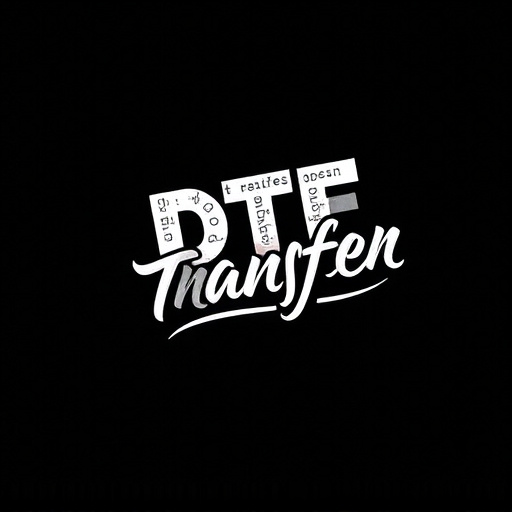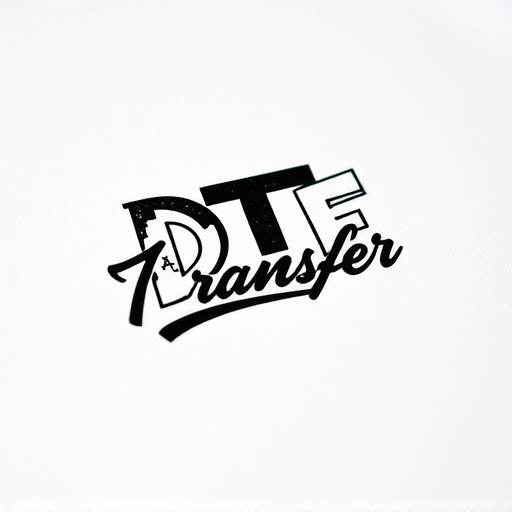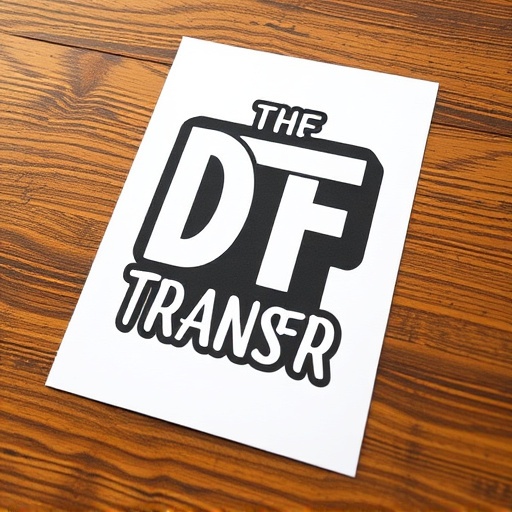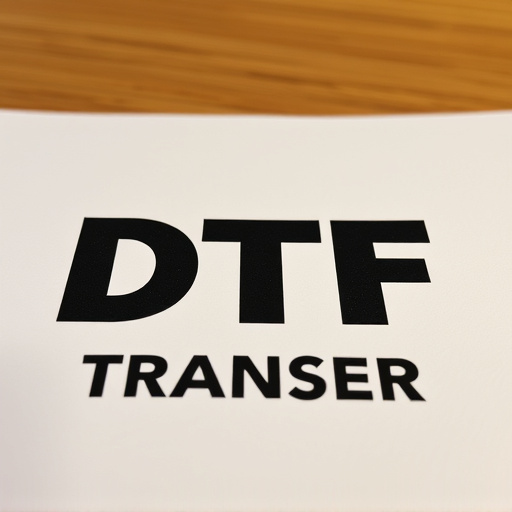Direct-to-Film (DTF) transfers offer unparalleled quality and versatility in printing. This technology enables creating durable, high-resolution prints on various surfaces by transferring ink onto a film pressed against the substrate. DTF has gained popularity across industries due to its ability to produce vibrant, crisp prints on textiles, plastics, metals, etc. Faster and more cost-effective than traditional methods, it ensures consistent color accuracy across batches. Achieving exceptional quality requires selecting the right film and paper, pre-processing original art accurately, following precise application instructions, and implementing effective post-processing techniques. Best practices include using high-resolution files, calibrating printers, testing prints, maintaining ink levels, and regular maintenance for optimal DTF results.
Direct-to-film (DTF) transfers offer a powerful way to achieve high-quality prints on various media. This comprehensive guide delves into the art of DTF, covering everything from understanding the process to selecting the perfect film and paper. We’ll walk you through pre-processing artworks, applying transfers, and post-processing techniques for optimal results. Learn best practices and troubleshoot common issues to master the craft of DTF printing, ensuring vibrant, durable prints every time.
- Understanding Direct-to-Film Transfers (DTF): An Overview
- Choosing the Right Film and Paper for DTF Printing
- Pre-Processing and Preparation of Artworks for DTF Transfer
- Step-by-Step Guide to Applying DTF Transfers
- Post-Processing: Enhancing and Curing DTF Prints
- Best Practices and Troubleshooting Common Issues in DTF Transfer
Understanding Direct-to-Film Transfers (DTF): An Overview

Direct-to-Film Transfers (DTF) represent a cutting-edge method in printing technology, offering unparalleled quality and versatility for creating durable, high-resolution prints directly onto various surfaces. This innovative process involves transferring ink or dye onto a film, which is then pressed against the desired substrate, enabling precise color replication and exceptional durability. DTF Printing has gained significant traction across diverse industries, from signage and advertising to apparel and even fine art.
The key advantage of DTF lies in its ability to produce crisp, vibrant prints on a wide array of materials, including textiles, plastics, metals, and more. This technique eliminates the need for intermediate steps, such as plate preparation, making it faster and more cost-effective compared to traditional printing methods. Moreover, DTF Transfers ensure consistent color accuracy across batches, making them ideal for large-scale production runs or custom, one-off projects alike.
Choosing the Right Film and Paper for DTF Printing

When it comes to direct-to-film (DTF) transfers, selecting the perfect film and paper is paramount for achieving high-quality DTF prints. The first step involves understanding your desired outcome and the characteristics of different films. For instance, transparent films offer precise color reproduction, making them ideal for detailed illustrations or photos. On the other hand, white or colored films can provide a unique look, enhancing contrast and adding a distinctive touch to your final product.
Paper selection is equally crucial. Consider factors like texture, weight, and finish. Smooth papers produce sharp details while textured options add a subtle depth. Heavier papers are more durable and suitable for display purposes. Additionally, choosing the right paper type ensures optimal ink adhesion, color vibrancy, and overall print quality. Experimenting with various films and papers will help you find the perfect combination for your DTF printing projects, allowing you to create stunning visuals that stand out.
Pre-Processing and Preparation of Artworks for DTF Transfer

Before applying a direct-to-film (DTF) transfer, careful pre-processing and preparation of artworks are essential for achieving high-quality DTF prints. This involves several steps to ensure the artwork is optimized for the transfer process. Firstly, digitize the original art or design using professional scanning equipment, capturing all necessary details and colors accurately. The digital file should be properly formatted and resolved for printing, adhering to specific requirements set by the DTF printer.
Once digitized, the artwork may require additional preparation such as color correction, cropping, or editing to remove any imperfections or unwanted elements. It’s crucial to use industry-standard software tools that support DTF printing profiles. This ensures the final print accurately represents the original design while considering factors like film transparency, ink absorption, and potential color shifts during the transfer process. Proper preparation enhances the overall quality and consistency of DTF prints.
Step-by-Step Guide to Applying DTF Transfers

Applying Direct-to-Film (DTF) transfers is a precise process that yields high-quality prints. Here’s a step-by-step guide to help ensure your success with DTF technology:
1. Prepare Your Design: Start by creating or sourcing a design suitable for DTF printing. Ensure it’s in a compatible file format (like SVG, PNG, or JPG) and has adequate resolution. Use design software that supports vector and raster elements for optimal results. Clean up any unnecessary details or artifacts to avoid issues during the transfer process.
2. Choose the Right Film: Select a DTF film suitable for your project’s needs. Different films offer variations in durability, transparency, and adhesive properties. Match the film type with your desired print outcome and application environment. Follow manufacturer instructions for proper storage and handling of the film to maintain its integrity.
3. Set Up Your Workstation: Create a dedicated workspace equipped with essential tools: a clean, flat surface; precision cutting tools (like a craft knife or cutting plotter); a light source for visibility; and protective gear like gloves. Ensure excellent ventilation as some DTF films may emit fumes during application. Have your design printed on paper or cardboard as a reference for accurate placement.
4. Apply the Film: Carefully peel back a section of the film’s backing, exposing only a small area of the adhesive side. Align the film with your design and press it firmly against the substrate (like t-shirt material) using a smooth motion from corner to corner. Ensure no air bubbles are trapped beneath the film. Remove any excess backing carefully.
5. Curing and Heat Pressing: Depending on your DTF printing method, cure the transferred image with UV light or apply heat via a press. Follow recommended curing times and temperatures for optimal results. This step ensures long-lasting durability and adhesion of the print to the substrate.
Post-Processing: Enhancing and Curing DTF Prints

After a successful direct-to-film (DTF) transfer, post-processing plays a crucial role in enhancing the quality of DTF prints. This step involves careful curing and optimization to ensure the final product meets expectations. The first part of this process is allowing the ink to set properly; this can be accelerated with heat or specific UV light exposure, depending on the type of ink used. Proper curing ensures vibrant colors, sharp details, and prevents smudging or fading.
Additionally, post-processing may include trimming and finishing techniques to refine the print. This could involve cutting the film to match desired dimensions, removing any excess material, or applying protective coatings to safeguard the DTF prints from environmental factors. These final touches contribute to a polished, professional outcome, making your DTF transfers stand out.
Best Practices and Troubleshooting Common Issues in DTF Transfer

Direct-to-film (DTF) transfers offer a modern method for creating high-quality prints, but mastering this process isn’t without its challenges. To ensure optimal results, adhere to best practices such as using high-resolution source files, calibrating your printer and workspace accurately, and maintaining consistent ink levels. Pre-printing tests on scrap material are crucial for color matching and identifying any potential issues with the print head or film.
Common DTF transfer problems include poor image quality, misregistered prints, and blocked nozzles. Troubleshooting these involves cleaning the print head thoroughly, checking for dust or debris on the film surface, and inspecting the printing parameters, including resolution, color profiles, and exposure time. Regular maintenance and adherence to manufacturer guidelines for cleaning and replacement parts are key to preventing recurring issues with DTF prints.














